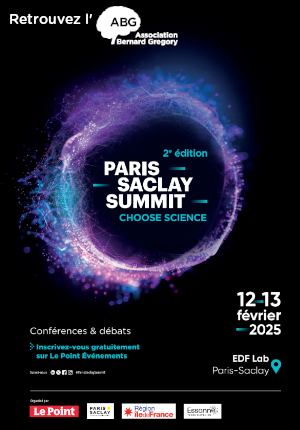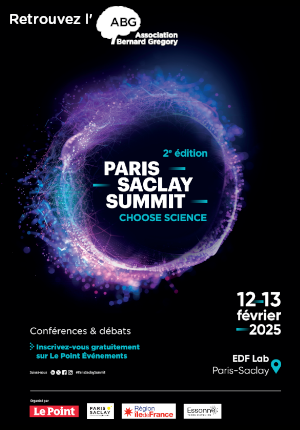L'interférométrie Mach-Zehnder appliqué à la mesure lidar du vent sur Mars et la Terre // Mach-Zehnder interferometry applied to lidar wind measurements on Mars and Earth
|
ABG-128271
ADUM-60780 |
Thesis topic | |
| 2025-02-01 |
Université Paris-Saclay GS Physique
Guyancourt - France
L'interférométrie Mach-Zehnder appliqué à la mesure lidar du vent sur Mars et la Terre // Mach-Zehnder interferometry applied to lidar wind measurements on Mars and Earth
- Earth, universe, space sciences
atmosphère, Mars, Terre, Lidar, instrumentation
atmosphère, Mars, Earth, Lidar, instrumentation
atmosphère, Mars, Earth, Lidar, instrumentation
Topic description
Ce projet, mené en collaboration entre le LATMOS (CNRS/UVSQ/UPS) et l'ONERA (UPS), vise à développer un instrument lidar doppler pour mesurer le vent sur Mars et la Terre, en utilisant une technologie d'interférométrie Mach-Zehnder à quatre sorties (QMZ).
-Problématique scientifique (Mars)
Le MARs Boundary Layer Lidar (MARBLL) est un mini-lidar doppler destiné à mesurer le vent dans la couche limite atmosphérique (CLA) martienne. Son développement repose sur la technologie laser compacte de Thales, utilisée dans les instruments ChemCam et SuperCam des rovers Curiosity et Perseverance de la NASA. Depuis 2009, des études et campagnes de mesures ont confirmé la viabilité du concept pour des sondages jusqu'à plus de 5 km d'altitude (Bruneau et al., 2013). Le concept avait été proposé à la NASA pour le Royer Perseverance (mission Mars 2020) qui l'avait placé dans sa short list.
L'orighinalité de MARBLL réside dans sa capacité à restituer le décalage Doppler sans les contraintes habituelles des lidars vent. Pour achever sa validation, des essais en vide thermique avec le nouvel assemblage de prismes et une campagne terrain sont nécessaires, dans la continuité des campagnes menées en 2011 et 2015 à l'Observatoire de Haute Provence. Une étape de quantification précise des biais et des erreurs de mesure dans des conditions se rapprochant le plus possible des conditions du spatial sera aussi nécessaire.
-Problématique scientifique (Terre)
La mesure des profils de vent atmosphériques est essentielle pour la prévision météorologique, notamment avec la mission ADM-Aeolus qui utilise un analyseur Double Fabry-Perot (DFP). Cette technologie est toutefois sensible aux variations de température et de pression, ce qui limite sa précision. L'interféromètre QMZ, adapté à la rétrodiffusion moléculaire, permettrait de surmonter ces contraintes, d'améliorer la précision et de mesurer le coefficient de rétrodiffusion particulaire (Bruneau & Pelon, 2021).
Un lidar UV basé sur le QMZ est en développement à l'ONERA pour des applications météorologiques et aéronautiques, notamment dans le cadre d'avions basse consommation. Depuis 2022, un partenariat ONERA/LATMOS a permis de concevoir un interféromètre monolithique, insensible aux vibrations, donc adapté aux applications aéroportées et spatiales. La fabrication, confiée à Winlight, sera finalisée d'ici mars 2025.
L'architecture lidar comprend un laser UV haute puissance, un système d'émission/réception et une interface de mesure en temps réel. Si le système est assemblé, la validation complète de la chaîne et l'adaptation pour des mesures longue distance restent à réaliser, avec en perspective une campagne en vide thermique pour sa spatialisation.
Conclusion
Ces travaux permettront de proposer un concept de lidar vent mature aux agences spatiales, dans un contexte porteur, avec l'héritage de la mission AEOLUS pour la Terre et le projet de lidar vent orbital martien de l'ESA, dont cette dernière s'est inspirée de MARBLL pour concevoir sa mission.
------------------------------------------------------------------------------------------------------------------------------------------------------------------------
------------------------------------------------------------------------------------------------------------------------------------------------------------------------
This project, conducted in collaboration between LATMOS (CNRS/UVSQ/UPS) and ONERA (UPS), aims to develop a Doppler lidar instrument to measure wind on Mars and Earth, utilizing a Quadri-Mach-Zehnder (QMZ) interferometry technology.
Scientific ambition (Mars)
The MARs Boundary Layer Lidar (MARBLL) is a mini-Doppler lidar designed to measure wind in the Martian atmospheric boundary layer (ABL). Its development is based on compact laser technology from Thales, used in the ChemCam and SuperCam instruments onboard NASA's Curiosity and Perseverance rovers. Since 2009, studies and measurement campaigns have confirmed the concept's viability for probing up to altitudes exceeding 5 km (Bruneau et al., 2013). The concept was proposed to NASA for the Perseverance rover (Mars 2020 mission) and was shortlisted.
The uniqueness of MARBLL lies in its ability to retrieve Doppler shift without the usual constraints of wind lidars. To complete its validation, thermal vacuum tests with the new prism assembly and a field campaign are required, following those conducted in 2011 and 2015 at the Haute-Provence Observatory. Additionally, a precise quantification of biases and measurement errors under conditions as close as possible to space conditions will be necessary.
Scientific ambition (Earth)
Measuring atmospheric wind profiles is crucial for weather forecasting, as demonstrated by the ADM-Aeolus mission, which utilizes a Double Fabry-Perot (DFP) analyzer. However, this technology is sensitive to variations in temperature and pressure, which limits its accuracy. The QMZ interferometer, adapted for molecular backscattering, could overcome these limitations, improve measurement precision, and provide valuable data on the particulate backscatter coefficient (Bruneau & Pelon, 2021).
An ultraviolet (UV) lidar based on QMZ technology is being developed at ONERA for meteorological and aeronautical applications, particularly for low-consumption aircraft. Since 2022, an ONERA/LATMOS collaboration has led to the design of a monolithic interferometer, resistant to vibrations, making it suitable for airborne and space applications. The manufacturing, entrusted to Winlight, is expected to be completed by March 2025.
The lidar system architecture includes a high-power UV laser, an emission/reception system, and a real-time measurement interface. Although the system has been assembled, full validation of the measurement chain and adaptation for long-range measurements are still required, with a thermal vacuum campaign planned to advance the instrument's space qualification.
Conclusion
These efforts will result in a mature wind lidar concept that can be proposed to space agencies, in a promising programmatic context. With the heritage of the AEOLUS mission for Earth and the ESA's Martian orbital wind lidar project—directly inspired by MARBLL—this project aligns with current and future space exploration needs.
------------------------------------------------------------------------------------------------------------------------------------------------------------------------
------------------------------------------------------------------------------------------------------------------------------------------------------------------------
Début de la thèse : 01/10/2025
-Problématique scientifique (Mars)
Le MARs Boundary Layer Lidar (MARBLL) est un mini-lidar doppler destiné à mesurer le vent dans la couche limite atmosphérique (CLA) martienne. Son développement repose sur la technologie laser compacte de Thales, utilisée dans les instruments ChemCam et SuperCam des rovers Curiosity et Perseverance de la NASA. Depuis 2009, des études et campagnes de mesures ont confirmé la viabilité du concept pour des sondages jusqu'à plus de 5 km d'altitude (Bruneau et al., 2013). Le concept avait été proposé à la NASA pour le Royer Perseverance (mission Mars 2020) qui l'avait placé dans sa short list.
L'orighinalité de MARBLL réside dans sa capacité à restituer le décalage Doppler sans les contraintes habituelles des lidars vent. Pour achever sa validation, des essais en vide thermique avec le nouvel assemblage de prismes et une campagne terrain sont nécessaires, dans la continuité des campagnes menées en 2011 et 2015 à l'Observatoire de Haute Provence. Une étape de quantification précise des biais et des erreurs de mesure dans des conditions se rapprochant le plus possible des conditions du spatial sera aussi nécessaire.
-Problématique scientifique (Terre)
La mesure des profils de vent atmosphériques est essentielle pour la prévision météorologique, notamment avec la mission ADM-Aeolus qui utilise un analyseur Double Fabry-Perot (DFP). Cette technologie est toutefois sensible aux variations de température et de pression, ce qui limite sa précision. L'interféromètre QMZ, adapté à la rétrodiffusion moléculaire, permettrait de surmonter ces contraintes, d'améliorer la précision et de mesurer le coefficient de rétrodiffusion particulaire (Bruneau & Pelon, 2021).
Un lidar UV basé sur le QMZ est en développement à l'ONERA pour des applications météorologiques et aéronautiques, notamment dans le cadre d'avions basse consommation. Depuis 2022, un partenariat ONERA/LATMOS a permis de concevoir un interféromètre monolithique, insensible aux vibrations, donc adapté aux applications aéroportées et spatiales. La fabrication, confiée à Winlight, sera finalisée d'ici mars 2025.
L'architecture lidar comprend un laser UV haute puissance, un système d'émission/réception et une interface de mesure en temps réel. Si le système est assemblé, la validation complète de la chaîne et l'adaptation pour des mesures longue distance restent à réaliser, avec en perspective une campagne en vide thermique pour sa spatialisation.
Conclusion
Ces travaux permettront de proposer un concept de lidar vent mature aux agences spatiales, dans un contexte porteur, avec l'héritage de la mission AEOLUS pour la Terre et le projet de lidar vent orbital martien de l'ESA, dont cette dernière s'est inspirée de MARBLL pour concevoir sa mission.
------------------------------------------------------------------------------------------------------------------------------------------------------------------------
------------------------------------------------------------------------------------------------------------------------------------------------------------------------
This project, conducted in collaboration between LATMOS (CNRS/UVSQ/UPS) and ONERA (UPS), aims to develop a Doppler lidar instrument to measure wind on Mars and Earth, utilizing a Quadri-Mach-Zehnder (QMZ) interferometry technology.
Scientific ambition (Mars)
The MARs Boundary Layer Lidar (MARBLL) is a mini-Doppler lidar designed to measure wind in the Martian atmospheric boundary layer (ABL). Its development is based on compact laser technology from Thales, used in the ChemCam and SuperCam instruments onboard NASA's Curiosity and Perseverance rovers. Since 2009, studies and measurement campaigns have confirmed the concept's viability for probing up to altitudes exceeding 5 km (Bruneau et al., 2013). The concept was proposed to NASA for the Perseverance rover (Mars 2020 mission) and was shortlisted.
The uniqueness of MARBLL lies in its ability to retrieve Doppler shift without the usual constraints of wind lidars. To complete its validation, thermal vacuum tests with the new prism assembly and a field campaign are required, following those conducted in 2011 and 2015 at the Haute-Provence Observatory. Additionally, a precise quantification of biases and measurement errors under conditions as close as possible to space conditions will be necessary.
Scientific ambition (Earth)
Measuring atmospheric wind profiles is crucial for weather forecasting, as demonstrated by the ADM-Aeolus mission, which utilizes a Double Fabry-Perot (DFP) analyzer. However, this technology is sensitive to variations in temperature and pressure, which limits its accuracy. The QMZ interferometer, adapted for molecular backscattering, could overcome these limitations, improve measurement precision, and provide valuable data on the particulate backscatter coefficient (Bruneau & Pelon, 2021).
An ultraviolet (UV) lidar based on QMZ technology is being developed at ONERA for meteorological and aeronautical applications, particularly for low-consumption aircraft. Since 2022, an ONERA/LATMOS collaboration has led to the design of a monolithic interferometer, resistant to vibrations, making it suitable for airborne and space applications. The manufacturing, entrusted to Winlight, is expected to be completed by March 2025.
The lidar system architecture includes a high-power UV laser, an emission/reception system, and a real-time measurement interface. Although the system has been assembled, full validation of the measurement chain and adaptation for long-range measurements are still required, with a thermal vacuum campaign planned to advance the instrument's space qualification.
Conclusion
These efforts will result in a mature wind lidar concept that can be proposed to space agencies, in a promising programmatic context. With the heritage of the AEOLUS mission for Earth and the ESA's Martian orbital wind lidar project—directly inspired by MARBLL—this project aligns with current and future space exploration needs.
------------------------------------------------------------------------------------------------------------------------------------------------------------------------
------------------------------------------------------------------------------------------------------------------------------------------------------------------------
Début de la thèse : 01/10/2025
Funding category
Funding further details
Ressources propres de l'unité de recherche*Région Ile de France - Autre
Presentation of host institution and host laboratory
Université Paris-Saclay GS Physique
Institution awarding doctoral degree
Université Paris-Saclay GS Physique
Graduate school
127 Astronomie et Astrophysique d'Ile de France
Candidate's profile
Optique théorique et expérimentale
Des connaissances en physique de l'atmosphère sont appréciées mais pas exigées.
Theoretical and experimental optics Knowledge of atmospheric physics is appreciated but not required.
Theoretical and experimental optics Knowledge of atmospheric physics is appreciated but not required.
2025-04-15
Apply
Close
Vous avez déjà un compte ?
Nouvel utilisateur ?
More information about ABG?
Get ABG’s monthly newsletters including news, job offers, grants & fellowships and a selection of relevant events…
Discover our members
 ONERA - The French Aerospace Lab
ONERA - The French Aerospace Lab  ADEME
ADEME  Laboratoire National de Métrologie et d'Essais - LNE
Laboratoire National de Métrologie et d'Essais - LNE  Institut de Radioprotection et de Sureté Nucléaire - IRSN - Siège
Institut de Radioprotection et de Sureté Nucléaire - IRSN - Siège  Aérocentre, Pôle d'excellence régional
Aérocentre, Pôle d'excellence régional  SUEZ
SUEZ  CESI
CESI  Tecknowmetrix
Tecknowmetrix  Groupe AFNOR - Association française de normalisation
Groupe AFNOR - Association française de normalisation  ANRT
ANRT  PhDOOC
PhDOOC  Ifremer
Ifremer  Nokia Bell Labs France
Nokia Bell Labs France  MabDesign
MabDesign  TotalEnergies
TotalEnergies  MabDesign
MabDesign  CASDEN
CASDEN  Institut Sup'biotech de Paris
Institut Sup'biotech de Paris  Généthon
Généthon







